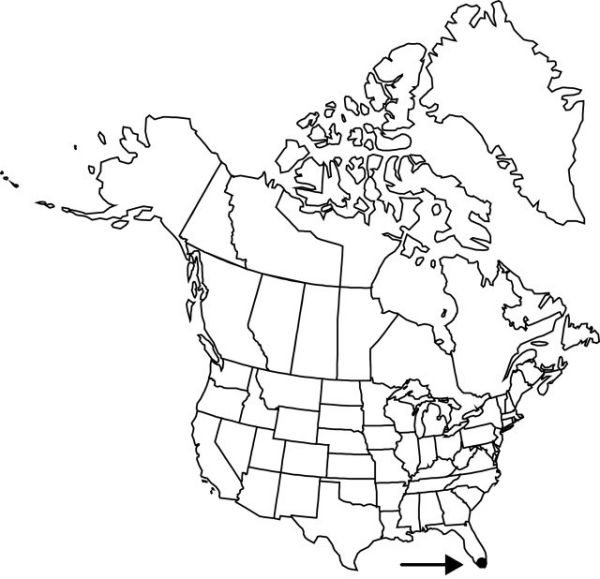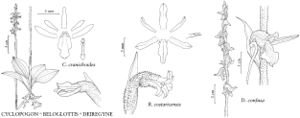Difference between revisions of "Beloglottis costaricensis"
Beih. Bot. Centralbl. 37: 365. 1920.
FNA>Volume Importer |
FNA>Volume Importer |
Revision as of 19:29, 24 September 2019
Plants to 40 cm. Roots 1–4, 1–6 cm × 3–8 mm. Stems subterranean or nearly so, short. Leaves fugacious, present or absent at time of flowering, 2–5, delicate, glabrous; petiole erect, slender, 2–4 cm; blade spreading, elliptic, 2–4.5 × 1.3–2 cm, apex acute. Inflorescences 6–35-flowered racemes, pubescent distally; scape 10–12.5 cm × 0.6–1 mm; bracts 5–6; floral bracts ovate, 5–12 mm, apex acuminate. Flowers white with green midveins, subsalverform; sepals connate at base, 1-veined, lanceolate, margins entire, apex acute to acuminate, abaxially pubescent; dorsal sepal 4–6 × 1.5 mm; lateral sepals oblique, 4.2–6 × 1.2 mm; petals 1-veined, linear, slightly falcate, 4 × 0.6 mm, apex acute, glabrous; lip adnate to base of column foot, 3-veined, 4.5 × 1.5–2 mm, glabrous; claw 1.5 mm, auricles subulate, 0.7–0.8 mm, projecting basally, flanking column and column foot; column slender, 2.5 mm, foot extending obliquely along ovary 1.5 mm without forming mentum; pedicellate ovary 3–4 mm, sparsely pubescent. Capsules 4–6 mm.
Phenology: Flowering Mar–Apr.
Habitat: Hammocks, in humus
Elevation: 0–10 m
Distribution

Fla., Mexico, West Indies, Central America.
Discussion
Beloglottis costaricensis has been questionably recorded in South America.
Selected References
None.
